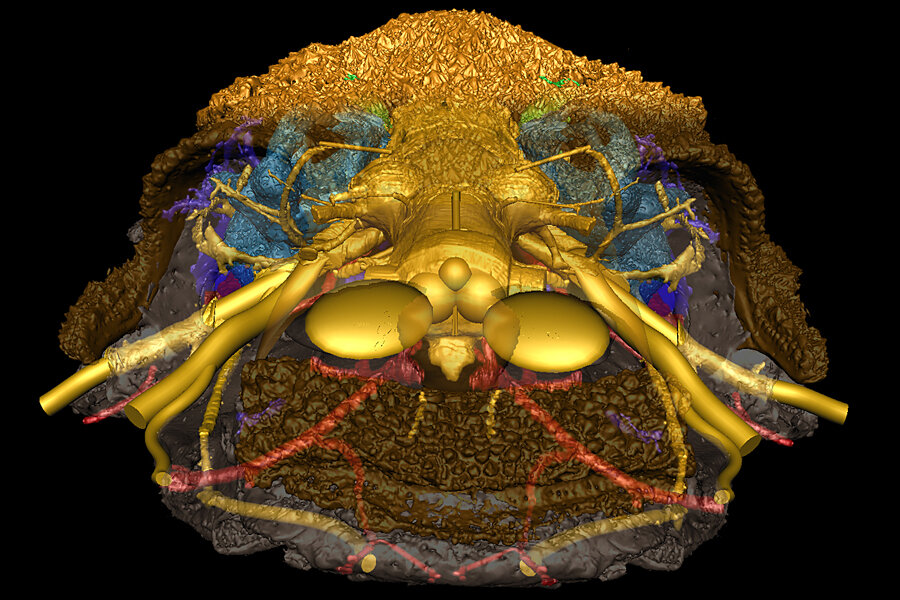Why don't you look more like a hagfish? Scientists offer clues.
Loading...
As the forces of natural selection led our aquatic ancestors wriggling into ever-shallower waterways and transformed their powerful fins into land-faring legs, most of the world was far too busy swimming to notice.
It was the Paleozoic Era's Devonian period, known as the Age of Fish, and these eccentric forays were occurring at the fringes of ocean society. In the meantime, the world's waterways were coming to be dominated by the beaky, often turtle-like, faces of the armored class of fish known as placoderms.
Researchers have now reconstructed one such face, from a fossil skull that provides new insight into how jaw-hinged vertebrate faces have come to look the way they do. Why do all of us have two nostrils, and why are they in the middle of our faces? And why do the weird, mono-nostrilled hagfish and lamprey, the only jawless vertebrates known to exist today, look so different from the rest of us?
Thanks to a new X-ray imaging technique, a study published this week in the journal Nature reports that the skulls of jawed vertebrates are now "rich in landmarks" that "allow the transition from jawless to jawed vertebrates to be broken down into evolutionary steps."
As the embryos of a jawless invertebrate develops, blocks of tissue grow forward along the sides of its brain, before meeting in the middle to form a big upper lip around a single nostril, reports the study.
But in jawed vertebrates with more frontally-loaded brains, that same tissue grows forward under the brain, pushing out along a midline that separates our nasal sacs into two familiar nostrils. And our jutting brains land our noses at the front of our faces, not back between our eyes like a lamprey's nostril.
Romundina stellina, an extinct placoderm that lived in Canada during the early Devonian, has provided the first major clue about what happened along the path from jawlessness to jaws. Like us, Romundina had a jaw and two nostrils, but unlike us, those nostrils sat way up between its eyes.
"This skull is a mix of primitive and modern features, making it an invaluable intermediate fossil between jawless and jawed vertebrates", says Vincent Dupret of Uppsala University, one of two lead authors who published this week's study.
Using the new imaging technique, which can distinguish fossilized bone from muscle, researchers mapped the internal contours of Romundina's skull and reconstructed its muscle and nerve formations. Among other things, they found that the skull had housed a brain with a short front end, much like those of jawless invertebrates.
"In effect, Romundina has the construction of a jawed vertebrate but the proportions of a jawless one," said Per Ahlberg of Uppsala University, the study's other lead author. "This shows us that the organization of the major tissue blocks was the first thing to change, and that the shape of the head caught up afterwards."
In 2011, another research group noted that extinct fish classes like placoderms showed a far greater diversity of jaws and feeding ecologies than our own aquatic ancestors, before a major extinction event wiped most of them out near the end of the Devonian period. "It is interesting to speculate what modern vertebrates might have looked like," wrote Philip Anderson of the University of Bristol, "if these diverse groups hadn't been severely diminished (extinct in the case of the placoderms)."








